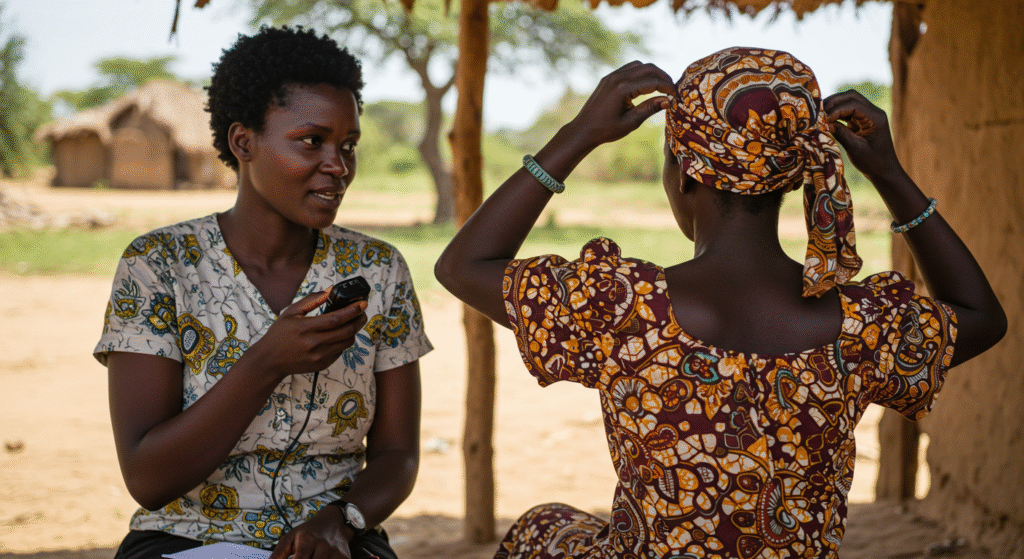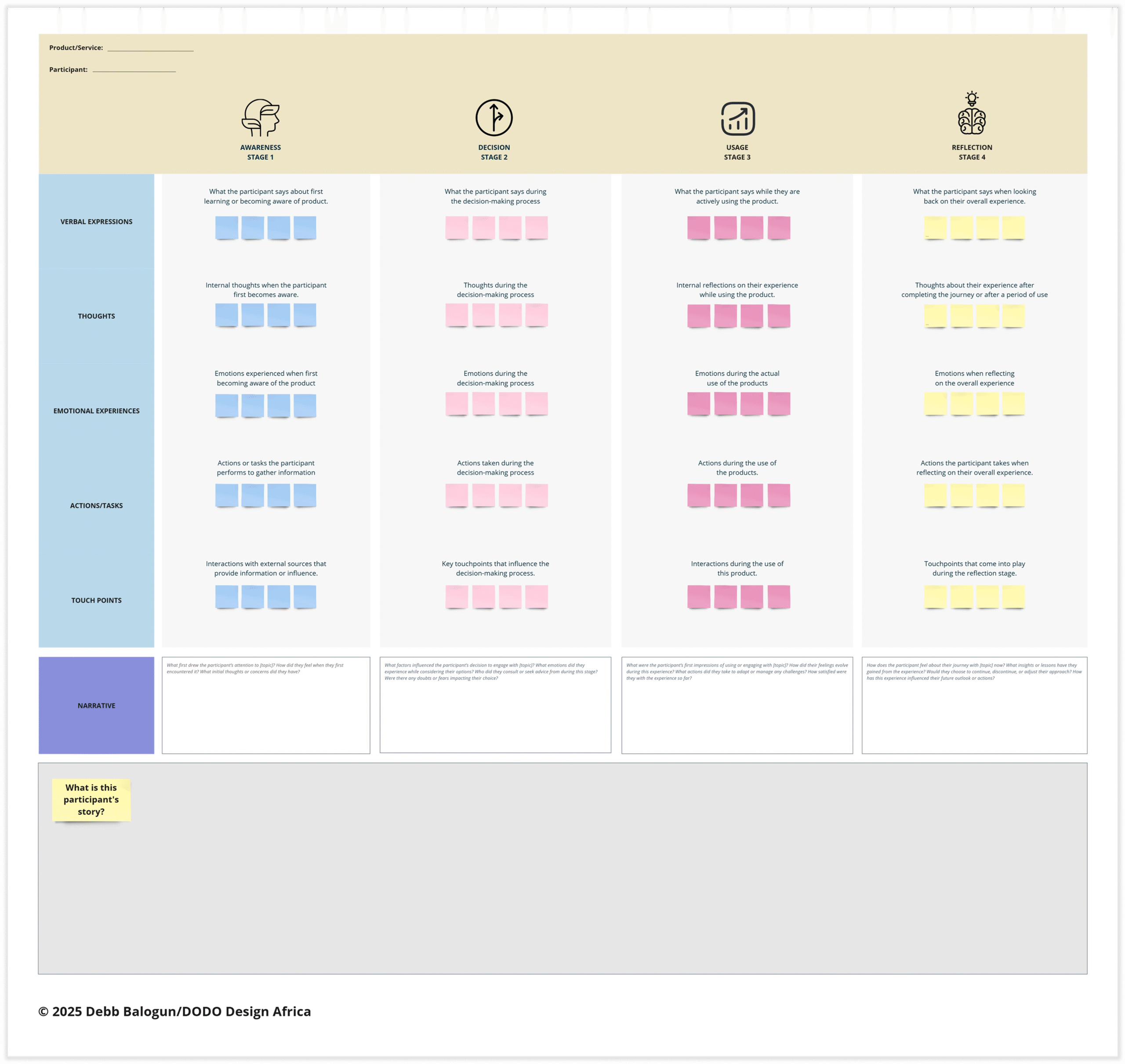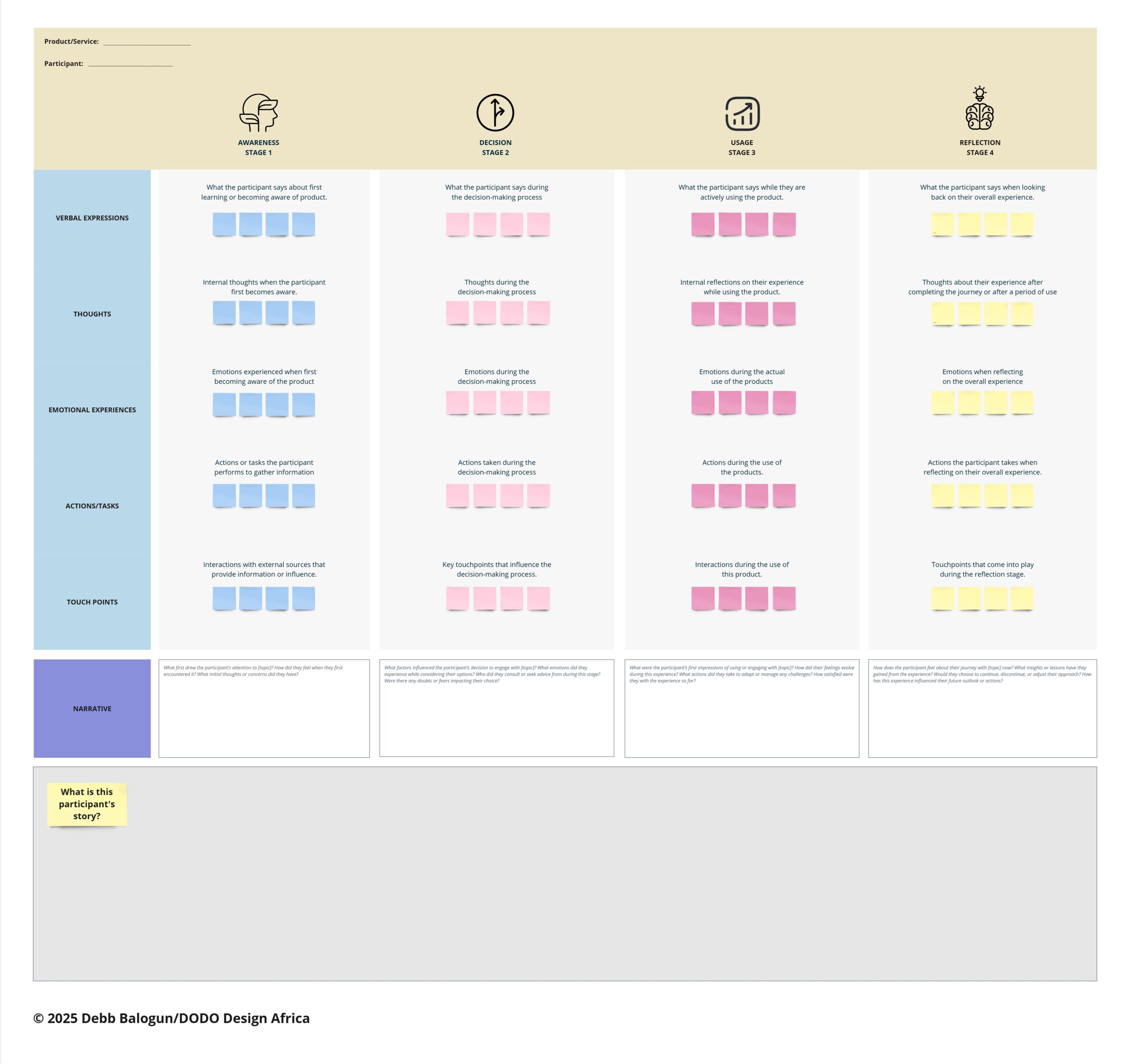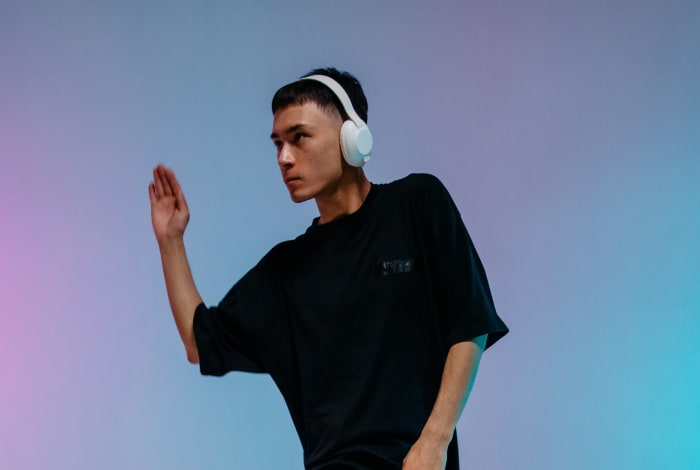For most researchers, each new research project is an exciting adventure of discovery, filled with moments of fuzziness, clarity and challenges that sometimes push us to reflect and iterate on our methods. During one of such projects where we engaged with quite a number of female participants through interviews, focus groups and co-creation activities. The women got to share rich, vivid experiences, some so vivid that we could recall days after fieldwork. Over the course of time and as our team did more interviews, and engaged with more participants over several locations and phases, we found what many researchers encounter, stories at times begin to meld into each other.
After much reflection, I realized that documenting each participant’s story holistically could have preserved these details for me as I’d gone on with the research work, and as the number of participants I worked with increased. This season of reflection inspired the Story Mapping Framework.

Inspiration was drawn from empathy mapping, journey mapping, and storytelling, which are three powerful methods long used in design and research to capture human emotions, needs, and desires. The Story Mapping Framework builds on these to ensure participants’ stories remain authentic, accessible, and insightful long after the research ends.
In order to capture the stories and emotional subtleties behind participants’ decisions, we needed a tool that would reveal qualitative depth. One that could follow a participant’s journey to capture not only what participants do or experience, but also the why behind their decisions.
The goal was to merge these three methodologies into one. Each participant having a personal story capturing the emotions, thoughts, actions, and external influences that drive him or her and not just a mere summary of behaviors.
How the framework works
The framework captures four key stages in a user’s journey.
- The awareness stage tracks how participants first learn about a product or service.
- The decision-making stage seeks to understand their thought processes as they weigh options and decide whether to proceed with the product or service.
- The usage stage focuses on the experiences the participants have when they interact with the products and services.
- The reflection stage captures participants’ overall experiences. Each stage has five critical components: verbal expressions, thoughts, emotional experiences, actions/tasks, and touchpoints. These components work together to paint a clear picture of the participant’s journey.
An interesting part of this framework is the narration section at each stage. By combining all the data collected, what participants say (verbal expressions), think (thoughts/internal reflections), feel (emotional experiences), do (actions/tasks), and the touchpoints they interact with, researchers can construct a comprehensive story. This weaving together lays a great foundation for the insights to be birthed and to be shared.

Usefulness for Research Purposes
- This framework can be adapted to a wide variety of research fields. Whether you’re studying healthcare journeys, consumer behaviors, or user experiences, it provides a holistic view of the participant’s lived experience, helping you to look at what they do and why they do it.
- A major feature of this framework is that it shows the external influences of a user, the touchpoints. They play a critical role in shaping participants’ behaviors and decisions. For example, within a journey, a participant might interact with a healthcare provider, a support group, or a Facebook group. Understanding these interactions can help researchers identify barriers or facilitators in the participant’s journey.
- Researchers can also identify emotional patterns that guide behavior. By mapping emotions to actions and decisions, the framework provides insight into how feelings like anxiety or relief shape the overall experience. This is critical for designing solutions and improving services.
- The narrative-building aspect of the framework makes it easier to communicate findings. Research isn’t just about numbers or isolated quotes, it’s about understanding the human experience. With this feature, a researcher can start crafting compelling stories, making it easier for stakeholders to understand the findings that researchers have uncovered.
- The narrative-building aspect of the framework makes it easier to communicate findings. Research isn’t just about numbers or isolated quotes—it’s about understanding the human experience. With this feature, a researcher can start crafting compelling stories, making it easier for stakeholders to understand the findings that researchers have uncovered.
Download the Story Mapping Framework Here
Author
-

Debb Balogun is a dedicated UX researcher and designer with a passion for human-centred design (HCD) combining her background in medical physiology with innovative design approaches.
View all posts

